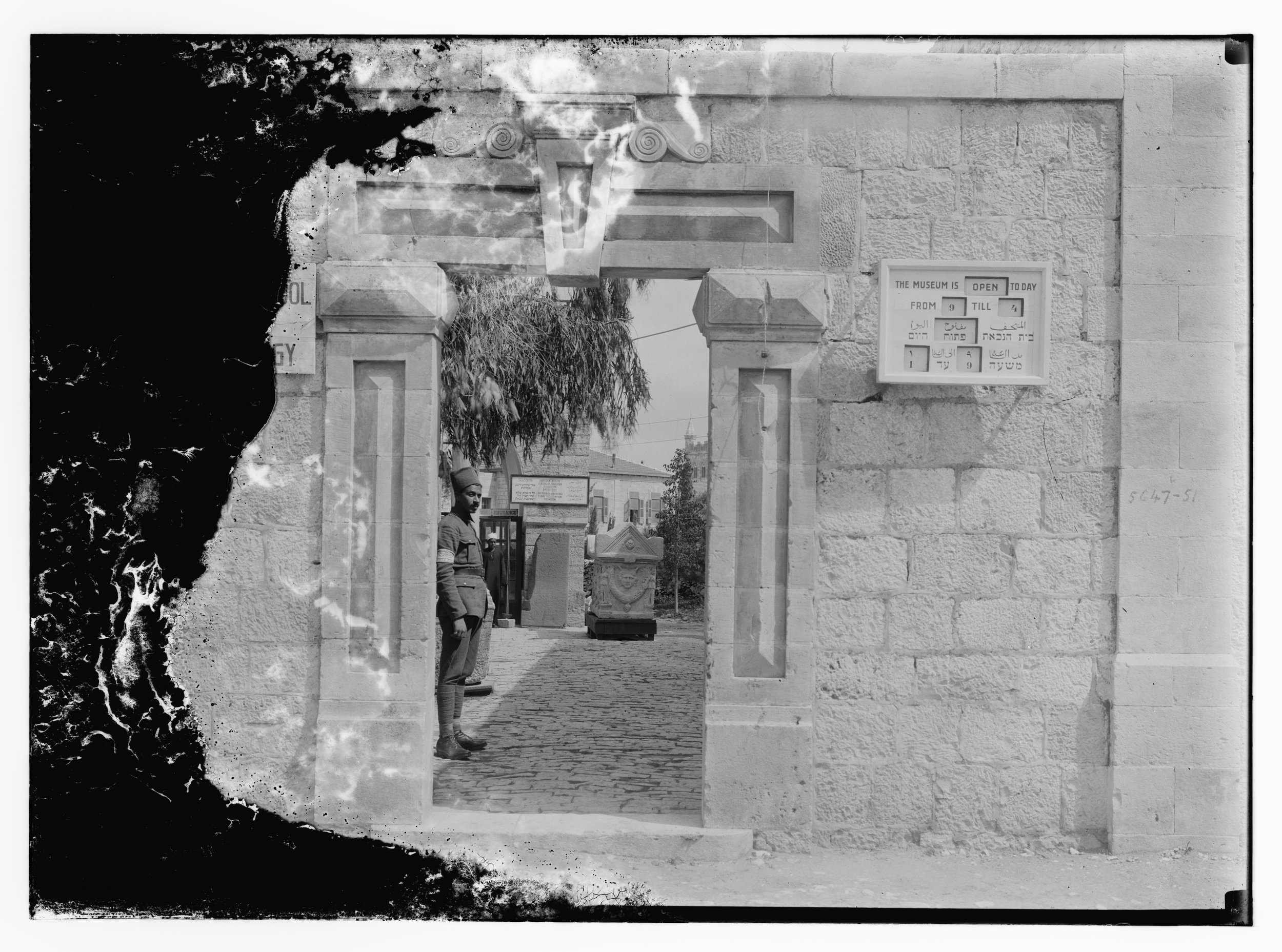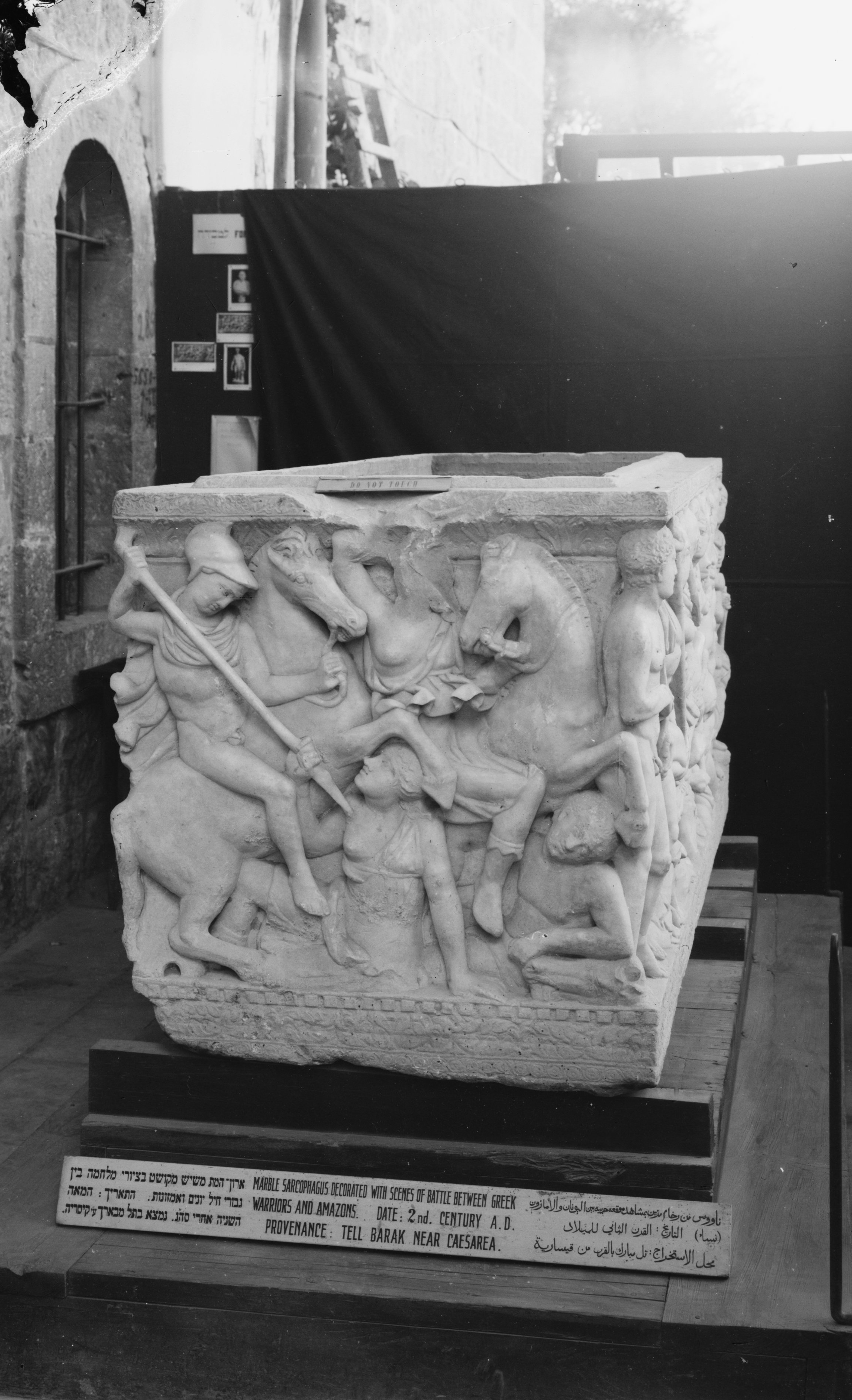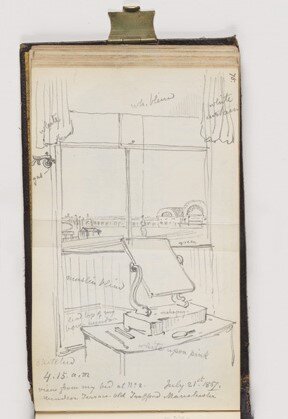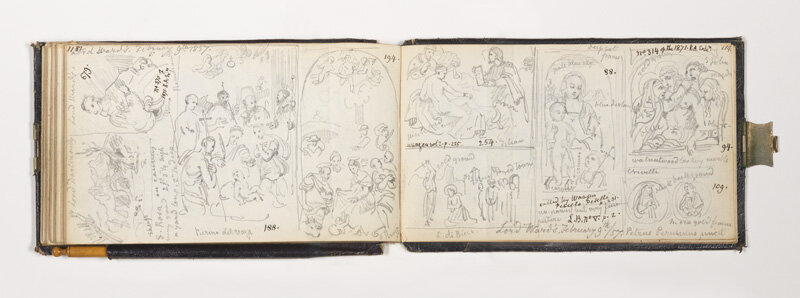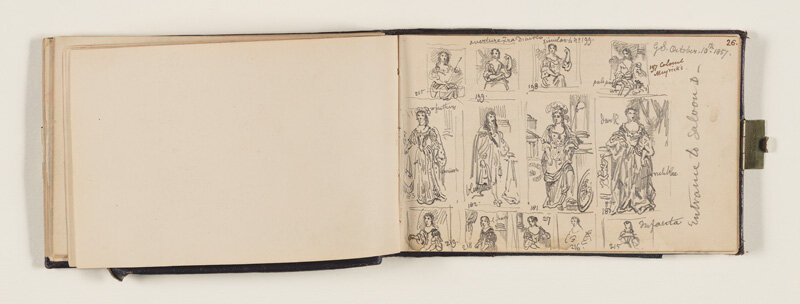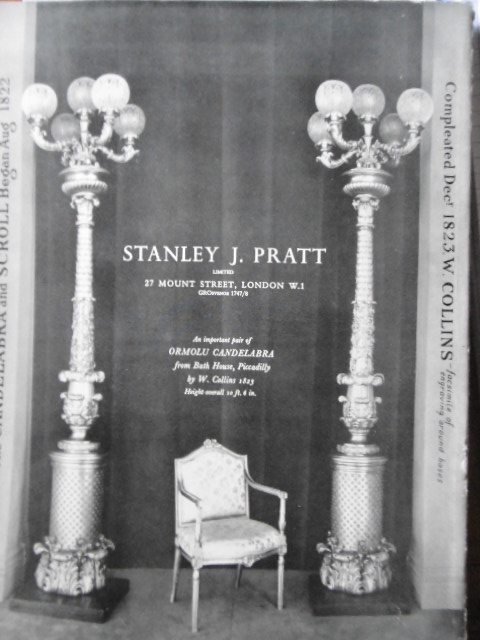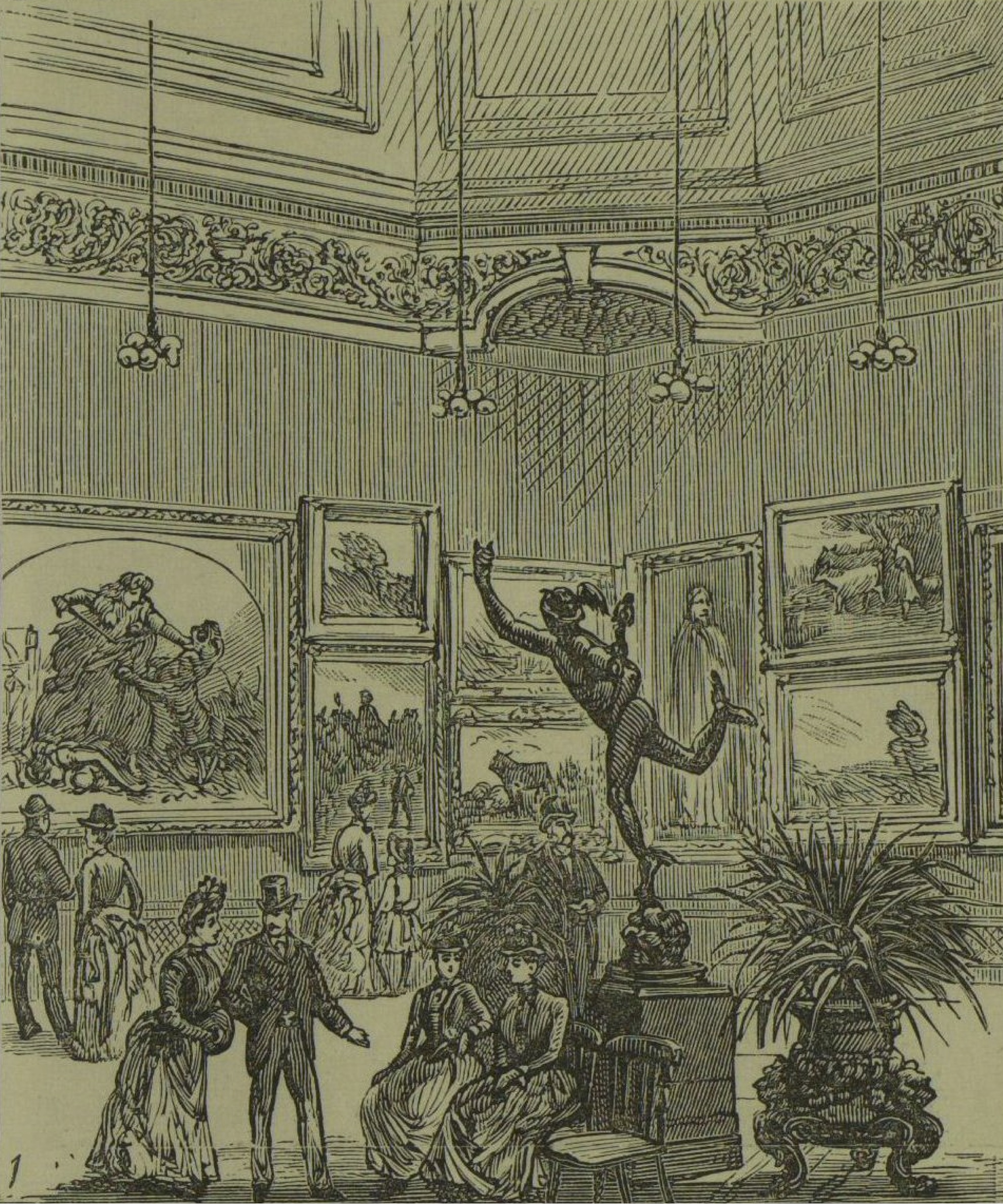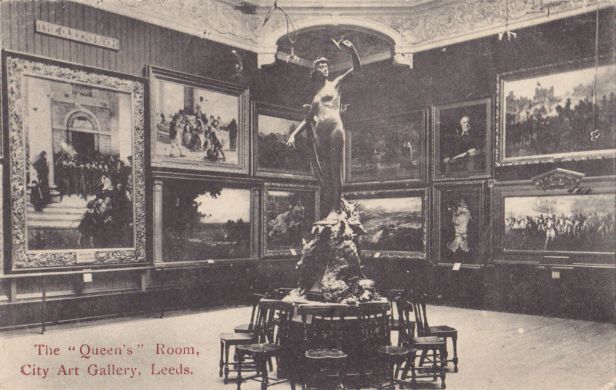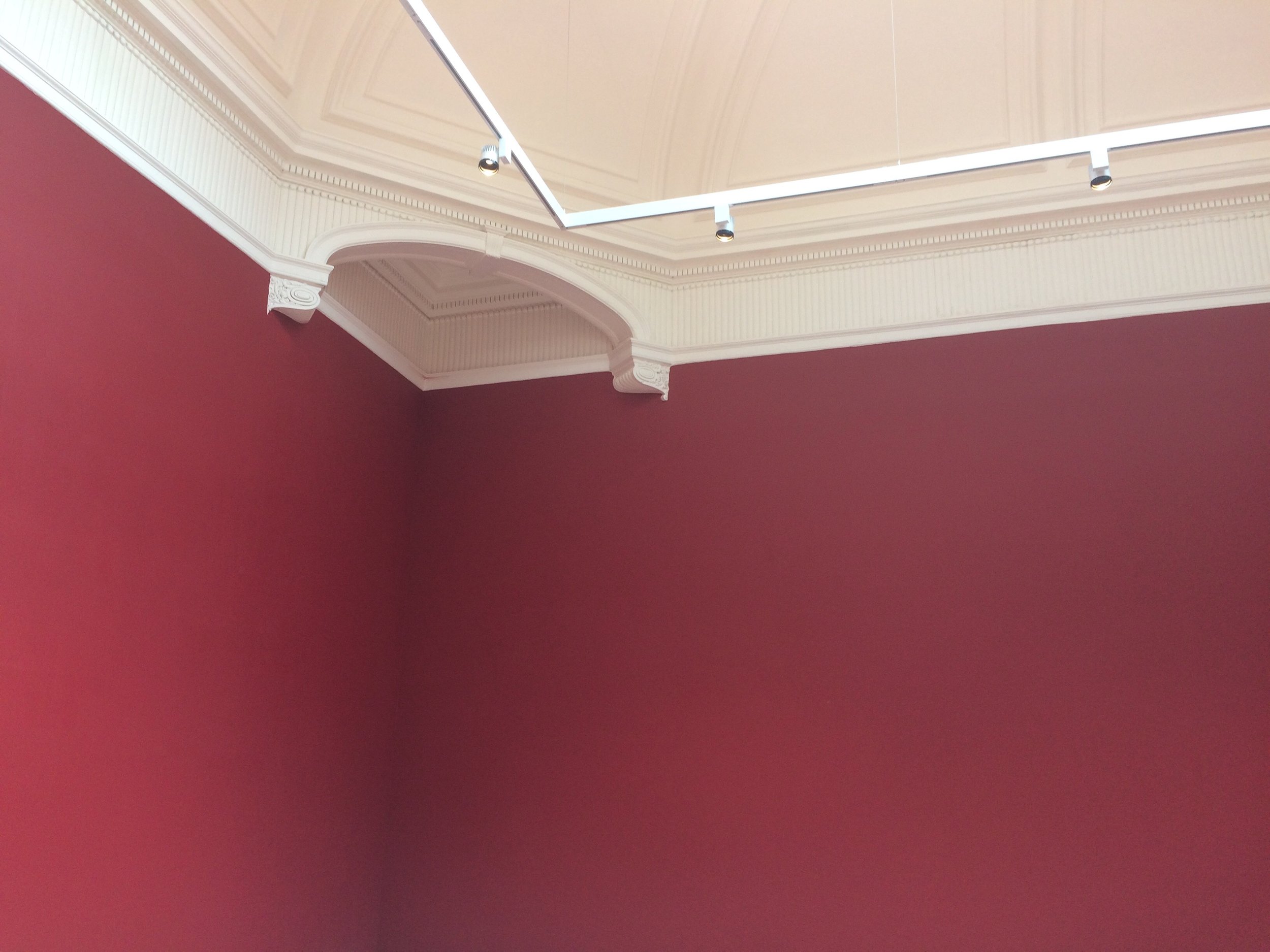Kajal Meghani, MGHG Postgraduate Officer writes:
It was a sunny but chilly day as attendees of the PGR/ECR MGHG Study Day gathered at the Jodrell Research Laboratory at Kew Gardens. It was the first in-person event that the MGHG had organised following the pandemic to share research and challenges. Keynotes and work-in-progress papers ranged in material, geography and method; from Korean ceramics to Indian coin collections, from Cumbria to Columbia, from creating databases to speculative histories. Here are some of the key themes and points that stood out for me:
The potential and challenges of quantitative data
During many of the presentations, I was often awestruck by the incredible findings and sleek visualisations that doctoral and early career researchers had produced using data mostly taken from collection databases. Visualisations included line graphs, heat maps and networks to mention but a few ways that researchers had approached their datasets. Isobel MacDonald’s keynote contextualised the collection of Han Sloane (1660 – 1753), whose bequest led to the foundation of the British Museum in 1753, with the rest of the museum’s collection. Through her visualisations, Isobel demonstrated that despite the continued focus on Sloane’s collection, it only amounts to 0.3% of the museum’s registered collection today. To get to this figure however, involved a painstaking process of extracting data from the museum’s collection database and ‘cleaning’ or processing the data to create visualisations. Isobel explained that while this figure was expected given that Sloane’s collection is now dispersed to other collections such as that of the Natural History Museum and the British Library, it challenges widely held narratives about the British Museum’s collection. While Sloane’s collection was important for the foundation of the museum, the continued focus on this aspect of the museum’s history can detract from other histories that have yet to be explored.
Figure 1: Entrance to the Jodrell Laboratory, Kew Gardens
Figure 2: Isobel Macdonald presenting her findings on the British Museum's collection
Lauren Barnes, whose work-in-progress paper gave an overview of her research on Korean collections across the UK, made an interest observation about data ‘cleaning’. Lauren suggested that instead of ‘cleaning’, as researchers we are adding or embellishing the data with our own knowledge to make it workable for our own research. Dawn Kantar has taken this a step further with her research on British portrait-sittings from 1900 to 1960 now in the National Portrait Gallery. Dawn saw the potential of utilising this data to develop a database populated with extracted information from textual accounts of sittings, which is often used instead to provide anecdotal information for exhibition or gallery labels. These presentations showed the potential and limitations of ‘big data’ and the analysis that could be conducted with such a dataset. While visualisations generated from data could act as a springboard for further research, granular research was still required to answer the ‘how’ and ‘why’ questions behind certain trends.
The importance of highlighting systematic silences
While it is frustrating, it is not unusual to find objects with unknown provenances when working with museum collections. Often these gaps come from information being disassociated with objects as they are transferred from private to public spaces, or even across departments within museums and galleries. However, as shown by Emma Martin’s keynote, and Sean Cham and Niti Acharya work-in-progress papers, these gaps can be intentional and produced by systems that specialised in erasure. Emma’s keynote focused on the lack of provenance for Tibetan objects in museum collections as a result of the deliberate removal of this information by the colonial government in India. She explained how the British colonial government divested political and diplomatic gifts of their provenance by depositing them in the British Toshakhana (treasure house) before they were sold to recoup the cost of any diplomatic gifts that had been presented by the colonial government to South Asian rulers or dignitaries.
Figure 3: Emma Martin presenting her research on Tibetan objects and the British Toshakhana
Sean’s research examined the lack of depictions of the British empire in the subject matter of paintings at the National Gallery, which obscured the institution’s link with British imperial history. Sean argued that this was despite many of the Gallery's Trustees deriving wealth from empire, which was used to purchase objects that were later donated to other public institutions such as the British Museum. Niti’s research focusing on women collectors and their contributions to the British Museum’s South Asian collection focused on Marion Rivett-Carnac (1843-1935). Carnac, despite being a wealthy woman who amassed a large collection of Indian jewellery that was displayed at six international exhibitions and subsequently donated to various European museums, is silent within various institutional archives. Niti explained that this was partly a result of her identity being obscured by conventions of the time that prioritised her husband’s name when donations were recorded in museum registers, which eclipsed Marion’s identity as the collector. These presentations demonstrated that while it is difficult (and in some cases near impossible) to regain some provenances, it is important to be aware of and acknowledge the systems that produce these silences that continue to impact research into institutions and collections.
Transforming silences and absences into sources
Several of the day’s presentations focused on methods to approach silences and absences present in institutional archives, which as demonstrated above, lead to partial and biased histories when left unaddressed. Presentations by Brad Scott, Shreya Gupta, Catalina Delgado Rojas and Megan Mills-Amissah showcased some of the ways in which they were tackling or working with these silences. Brad’s presentation focused on the ways in which he was identifying the indigenous peoples that had largely been overlooked in the studies of the networks involved in the collation of Hans Sloane’s Herbarium by re-examining primary sources and mapping absences.
Figure 4: Brad Scott presenting his research on Sloane's Herbarium
Similarly, Shreya mapped the many individuals of Indian heritage such as coin dealer Chanda Mall (active 1872-1901) who sold coins to British numismatist Richard Bertram Whitehead (1879-1967) to help develop his collection. Using a visualisation programme called Onodo, Shreya’s research aimed to decentre Whitehead as a collector and contextualise his collecting in relation to the many Indian individuals that aided his collecting practices. Catalina too used the relational approach to unpack symbolic reparations and highlight overlooked parties involved in the development of the Museum of Memory of Colombia. Megan showed how gaps in the archive could be bridged in her research on the representations of Ananse, a prominent figure in Ashanti folklore, within museum collections through contemporary visual culture. This Afro/African-futurist lens provide an ‘against-the-grain’ reading of the colonial archive that currently dominates the way in which Ananse is understood within the museum context. These presentations offered alternative and creative ways to think through silences and absences that can often be encountered during research.
Working with institutional memory
Researchers use a variety of sources, tangible to intangible, to piece together histories of institutions. However, presentations given by Mark Liebenrood and Jenny Durrant reminded me that institutions are made up of individuals, which seems like an obvious statement to make but sometimes working with archives can distance you from the very individuals that are a part of this history. Mark’s paper focused on developing an institutional history of the LYC Museum and Art Gallery in Cumbria, which was established by Li Yuan-chia (1929 - 1994), a Chinese artist, poet and curator in 1972. Using the LYC’s exhibition catalogues, all of which are unique in terms of the design and information they include within the pages, Mark posed the question if and how an institutional history could be composed using the catalogues as a source. For me, this presentation demonstrated that exhibition catalogues, uniform in style or not, can embody the knowledge and idiosyncrasies of the individuals involved in their creation. While Mark was working with a tangible archive, Jenny’s paper focused on her use of oral history in recording curatorial memory. Jenny, who had worked as a curator at the Royal Albert Memorial Museum in Exeter, reflected on her ‘insider’ status and the impact that has on creating an institutional history. Jenny’s thoughtful questioning on the ethics of using information gained through her insider status and trust from former colleagues is an issue that many researchers grapple with as they undertake collaborative research projects where the staff at institutions that we are studying are also colleagues and confidants.
Tracing histories through objects
Objects can be tangible reminders of overlooked, unknown and unusual connections between people, institutions and places in the world, which was exemplified in the research being conducted by Viveca Mellegård and Tobias Gardner. Tobias Gardner work-in-progress paper traced the links between Sheffield and Atlantic slavery through plantation hoes and Bowie knives manufactured in Sheffield. Tobias explained Sheffield’s production of plantation hoes, which were used by enslaved peoples on plantations in the Americas, and Bowie knives engraved with pro-slavery inscriptions, complicate narratives that focus on Sheffield’s antislavery activism. Through his presentation, Tobias raised questions as to how this history can be made accessible to a wider public and reflected on the exhibition of plantation hoes and Bowie knives within museums spaces. At Kew's Economic Botany Collection, we were shown samples of Indigo and related material by Viveca, who is researching Kew’s collections of Indigofera tinctoria from India and its links with contemporary indigo production and dyeing in West Bengal. Viveca described the many sources from which indigo samples ended up in the Economic Botany Collection, and I was particularly surprised to find out that Coleman's (of Coleman's Mustard fame) produced indigo too! We only had time to see a small portion of the collection but what Viveca was able to show and explain to us in that time made us all want to come back to visit the Economic Botany Collection again.
Figure 5: Viveca Mellegård showing us the indigo samples in Kew's Economic Botany Collection
Conclusion
All in all, I found the keynotes and work-in-progress presentations to be incredibly stimulating and inspiring. I very much enjoyed meeting other postgraduate and early career researchers investigating institutional histories and learning more about their experience of conducting this research. It was encouraging to hear that many of us (often working in isolation on our respective research projects) were grappling with some of the same issues and questions, and exchanging ideas over biscuits, tea and sandwiches is always a plus in my book.











